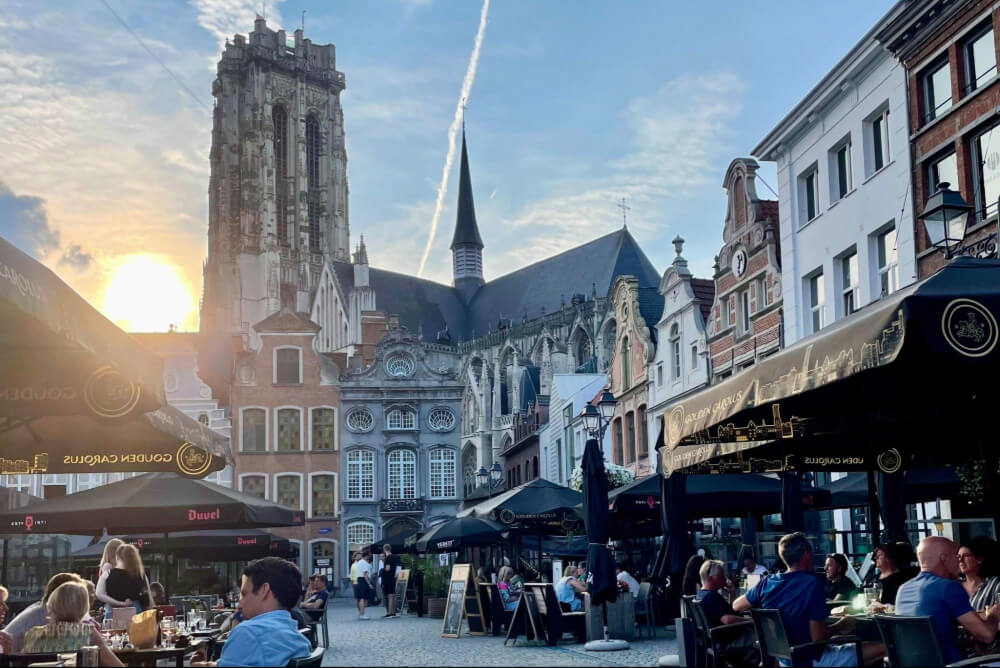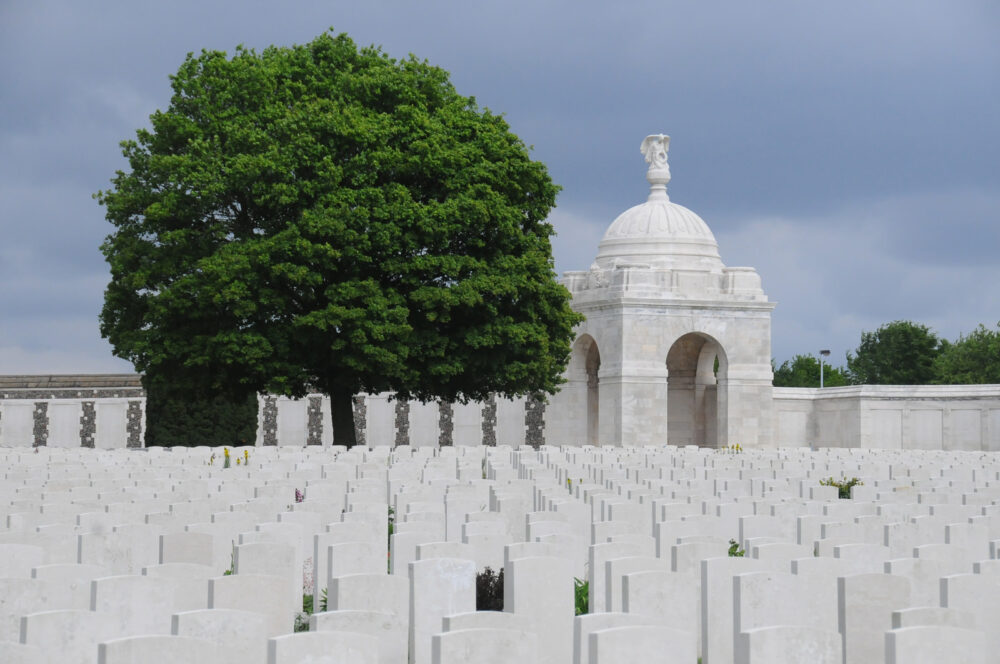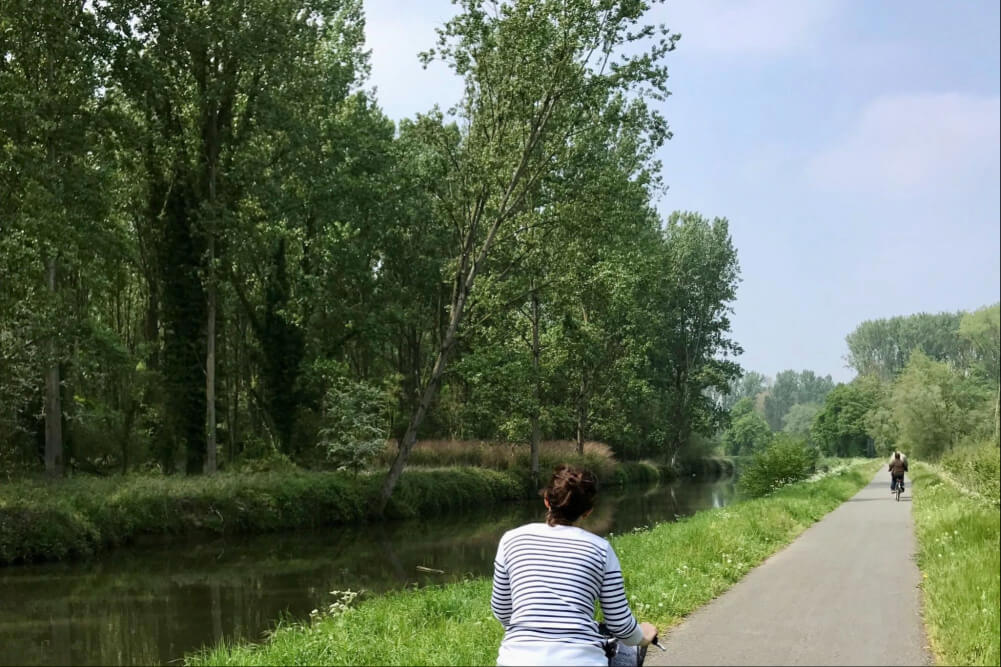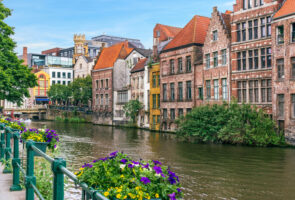Belgium: Insider’s Guide to an Often-Overlooked Corner of Western Europe
 Mechelen is a hidden gem in Belgium; read on to find out why. Photo: Tom Stinglhamber
Mechelen is a hidden gem in Belgium; read on to find out why. Photo: Tom Stinglhamber
The insider advice about Belgium on this page is from one of Wendy’s Trusted Travel Experts for Belgium: Tom Stinglhamber of Brilliant Ideas.
Based in Antwerp and fluent in Dutch, English, French, and Portuguese, Tom started as a hotel concierge and now treats travelers to that same white-glove service as he crafts Benelux itineraries combining city sights and countryside charm. It’s a compact region (Amsterdam is an hour’s drive from his office), so he knows the right people to make your trip special, whether that’s a master Cicerone (a beer sommelier) who can guide you through a tasting of Belgium’s finest brews, a Michelin-starred chef who will cook only for you as you cruise privately through Amsterdam’s canals in a luxuriously refurbished 19th-century boat, or a renowned chocolatier who treats you to a praline workshop in his private atelier. Accommodations are most often in stylish, independently owned boutique hotels, along with the odd medieval castle that has been transformed into a romantic overnight haven.
Where to Stay and Eat

De Krook is a library and media center with a great view of Ghent. Photo: Michiel Devijver
Best bang-for-your-buck hotel
In Brussels, Hotel Amigo is full of Belgian touches: Magritte posters, comic-strip drawings of Tintin, turndown treats of speculoos cookies or Belgian chocolates. And the location is perfect, just off a beautiful square, Grand Place; you can almost touch City Hall from some rooms. Tom’s relationships here allow him to pamper travelers with room upgrades, early check-in, late check-out, and dining credits.
Best-value splurge hotels
Les Bains de Spa, located in the quiet city of Spa, is a new boutique hotel set in a historic palace that is a UNESCO World Heritage Site. Spa became famous in the late 19th century when it was a favorite of European royals for—you guessed it—thermal spa treatments. Deep in the Ardennes countryside, this wonderful property seamlessly blends heritage and tradition with contemporary luxury. Come to take the waters, hike in the countryside, visit historic WWII locations with a battlefield specialist (Les Bains is quite close to the site where the Battle of the Bulge was fought), and stroll through charming villages.
In Ghent, 1898 The Post is a boutique hotel full of carefully chosen furniture and knick-knacks that give it a homey feel. The Tower Suite is the most romantic room in town. This octagonal suite, spread over two floors connected by a winding staircase, has you sleeping in a Belle Epoque tower with a 360-degree view over the rooftops of this historic city.

Make 1898 The Post your home-away-from-home in Ghent. Photo: Zannier Hotels
Restaurant the locals love
Located on a lovely square in a residential section of Brussels close to the EU headquarters, Le Clan des Belges is a quaint brasserie offering authentic Belgian food, making it popular with both Belgians and visiting diplomats.
Meals worth the splurge
Dinner at three-Michelin-starred Zilte is a splurge you won’t regret! Its view of the Antwerp skyline from the top floor of the Museum aan de Stroom, the understated contemporary interiors, and the meticulously prepared cuisine are all swoon-worthy.
Also in Antwerp, the stunning Botanic Sanctuary hotel has four of the best restaurants in town, sharing three Michelin stars among them, all under one roof. Hertog Jan, with two Michelin stars (and, Thomas suspects, soon to be three), offers a Japanese-inspired, omakase-style experience in an intimate, contemporary setting.
Dish to try
Flemish stew, a rich and savory traditional meat-and-onion stew made with Belgian beer—served with proper Belgian fries, of course! You’ll find this dish in most traditional brasseries.
Prime picnic spot
Middelheim Museum in Antwerp, a place where art and nature go hand-in-hand. Sculptures from local and internationally known artists are spread across a beautiful park. Buy a belegde broodje (fresh sandwich) from a bakery and enjoy the setting! The museum is located on the outskirts of town, but easily accessible; on the way you’ll pass by the Zurenborg district, with its photogenic concentration of Antwerp’s Art Nouveau buildings.
What to See and Do
Don’t miss
Belgium was a crossroads of many battles and world wars—the Napoleonic Wars (Waterloo), World War I (Ypres, Flanders Fields), World War II (Battle of the Bulge). Tom knows passionate military historians who can put the battles in context and help you understand the physical and strategic challenges faced by the soldiers and generals. It’s a very emotional experience—and a scenic one, too: These sites are often located in less-visited areas of the countryside.

Tyne Cot is a memorial to Commonwealth soldiers who went missing in WWI. Photo: Tom Stinglhamber
Don’t bother
Traveling by train for more than a day trip; unless you’re a light packer, negotiating train stations with large bags can be challenging.
Most underrated place
Most travelers visiting Belgium explore the art cities of Flanders, in the north. But to the south, Wallonia has majestic forests, clear rivers, picturesque villages, centuries-old traditions, and even a couple of castles that have been turned into atmospheric boutique hotels with wellness options.
Most overrated place
Peeing Boy Statue (Manneken Pis) is one of the best-known attractions in Brussels. But don’t expect something grand: It’s a small bronze statue, just 24 inches tall, at the top of a larger fountain.
Hidden gems
Ghent is less touristy than Bruges, giving you the feeling of having stepped back in time. Its other main appeal is a very modern and eco-friendly shopping and food scene.
Mechelen, a charming city that had its heyday in the time of the Burgundians (1350-1500), boasts an architecturally stunning cathedral and Renaissance city palace, world-class breweries, a winding river by which to stroll, and very few tourists.
Cheap thrill
In Bruges, ride a bicycle into the countryside along the canals, dikes, and polders (a kind of marsh or flood plain) to the lovely village of Damme, where you will find a wonderfully maintained medieval port. On the way back to town, you’ll pass white-painted polder houses that illustrate the quintessential Flemish village: charming, nostalgic, and romantic.

Biking is a wonderful way to see the countryside around Bruges. Photo: Tom Stinglhamber
Bragging rights
After passing strict security controls, visit the closed world of Antwerp’s diamond district, going behind the scenes with a diamond broker. He’ll relive the glory days, the near-collapse, and finally the resurrection of Antwerp’s diamond industry in the nineteenth century. But most importantly, you’ll visit a family-owned business and atelier to understand the basics of gemology, jewelry design, and diamond polishing. You’ll also pass by the Diamond Bourse (exchange) to see why Antwerp has been the largest and most dependable diamond center in the world for more than five centuries.
Who doesn’t think of chocolate when they think of Belgium? Spend an afternoon making your own chocolates and pralines at a private workshop in the Ghent atelier of a Belgian chocolatier. Unsurprisingly, this is a family favorite.
How to spend a lazy Sunday
In Brussels, Sundays are antique and flea market days. Start at one of the spots most frequented by locals: Jeu de Balle Square, also known as the Old Market. Here you can find all kinds of trinkets, old photographs, vintage furniture, second-hand clothing—you name it. The atmosphere is extremely welcoming, and the square itself is beautiful. All around you’ll find numerous cozy eateries and typical Brussels cafés. Afterward, continue to Grand Sablon, which on Sundays transforms into a market displaying antiques and books. Belgians have a passion for pretty objects with soul!

Spend a Sunday wandering the flea market in Jeu de Balle Square, Brussels. Photo: Jean-Paul Remy
Best Times to Go

May, June, September, and October have good weather and not too many crowds, as most European children are in school. May and June see longer days, with sunset after 10pm—ideal for evenings with drinks or dinner on a sunny terrace.
Worst Time to Go
January and February. Winter weather without the cheerful spirit of Christmas and New Year’s can make for a dreary experience.
Biggest Rookie Mistake
Dining at one of the restaurants on Brussels’ Rue des Boucher (next to the main square) or in Bruges’ Markt (the central square). Those areas have appealing eateries with Belgian specialties and fancy terraces, but they are tourist traps! Often, the best restaurants are not located in the tourist areas but rather in the residential neighborhoods where locals live.
Scam to Avoid
Since time immemorial, Bruges and lace have been inextricably linked; by the 13th century, Bruges was the epicenter of Europe’s textile industry, earning Belgium the nickname “the home of lace.” However, lace production has since moved to places with lower wages. What you see in lace shops in Bruges nowadays is sadly not authentic.
Airport Intel
At Brussels Airport, a Fast Lane Pass allows travelers to move through security screening more quickly. It’s pretty cheap, and easy to use.
Don’t Forget to Pack
Comfortable shoes, since most historical city centers have cobblestone streets.
Can't-Miss Photo Op

Romantic Bruges is undeniably Instagramable, but the narrow cobbled streets can be packed with tourists. Luckily, most of them arrive in town after 11am, so you can get an uncrowded shot of the historical city center in the early morning.
The Souvenir
The Sint Andries and Het Zuid neighborhoods in Antwerp are trendy districts that thrive on art galleries and local designer and vintage shops (and magnetic restaurants and bars at night). Depending on your budget, you can go home with a piece from the flagship store of Dries Van Noten or cookies from Philip’s Biscuits!







